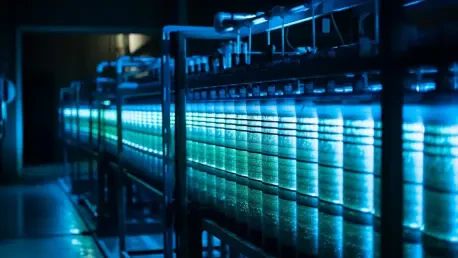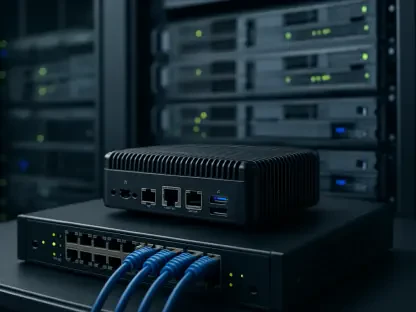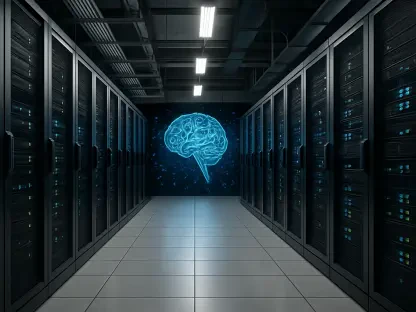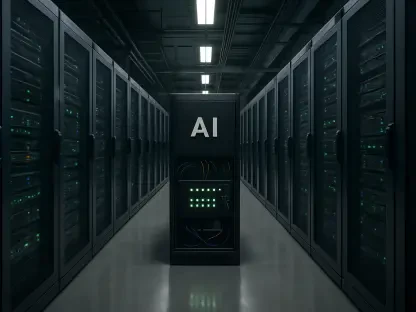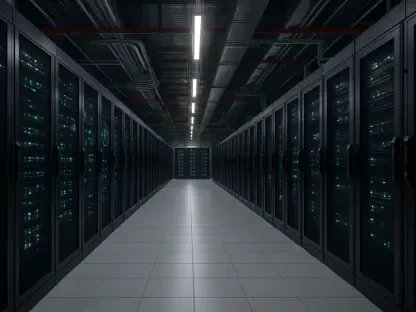In a remarkable shift from its traditional market, Valvoline has ventured into the burgeoning landscape of data centers, harnessing its expertise in liquid cooling technology to facilitate enhanced performance. This foray into the digital realm marks a significant transformation for a company historically entrenched in automotive lubricants. At the heart of this evolution lies the innovative utilization of liquid coolants, a critical technology parallel between AI servers and high-speed Formula 1 racecars. This comparison showcases how advanced cooling systems can vastly improve operational efficiency. Valvoline’s approach brings a blend of propylene glycol, water, and specialty additives, originally synonymous with automotive proficiency, to cater to the unique demands of data centers. This move reflects the increasing importance of thermal management solutions in the tech industry, driven by the need for quieter, fanless systems that minimize noise and dust disturbances.
The Mechanics of Liquid Cooling Systems
Similarities Between Data Centers and Racing Technology
The fusion of technology from sports arenas to server rooms illustrates a groundbreaking strategy for optimizing performance. This strategy emphasizes how expertise in liquid cooling systems synergistically transforms environments once defined by combustion engines into realms dominated by semiconductor heat mitigation. Both AI servers and racecars require efficient heat dissipation to maintain peak functionality. As AI servers expand their computational breadth, the need extends far beyond the traditional fan-based cooling methods. The similarities in mechanics speak to a broader narrative of cross-sector innovation, where the principles of hydrodynamic cooling ensure that systems operate smoothly under extensive pressure.
Valvoline has astutely leveraged this similarity, transitioning its renowned prowess in fluid dynamics to address the intricate cooling requirements of burgeoning data infrastructures. This adaptation not only reduces the thermal load in servers but also supports a quieter, more dust-free environment devoid of conventional cooling fans. Such advancements make these systems particularly attractive to the extensive and ever-expanding tech-driven market. The implementation of liquid cooling technologies in data centers underscores the mutual benefits each field can glean from hybrid mechanical approaches, pushing the envelope in both automotive and digital domains.
The Composition and Benefits of Liquid Coolants
Central to Valvoline’s new offering is its specialized coolant formulation tailored for data centers, a testament to its deep-seated expertise in fluid technology. Designed with propylene glycol and water-based chemistry, the coolant is enriched with unique additives to optimize cooling efficacy and safeguard against system wear. The meticulously crafted formula addresses the pressing need for efficient thermal management while guaranteeing environmental safety and mechanical integrity. This proactive approach ensures that modern data centers can meet escalating cubic data demands while maintaining operational sustainability.
Beyond the scope of thermal regulation, this liquid cooling technology introduces several auxiliary advantages that reshape conventional server configurations. One major benefit is noise reduction, a crucial factor for accommodating increasingly sensitive equipment environments. By eliminating the need for cooling fans, systems can exploit silent operation, greatly enhancing user experience within server rooms. Additionally, the suppression of dust accumulation presents a pivotal barrier against potential infrastructure threats. With these attributes, Valvoline’s liquid cooling systems emerge as pioneers in addressing comprehensive data center needs, promising a smoother transition into increasingly demanding tech futures.
Industry Trends and Market Growth
Liquid Cooling and Its Market Potential
Trends in data center management signify an evolutionary phase particularly centered around enhanced physical infrastructure. Industry experts from the Dell’Oro Group have unveiled data-driven projections that underline a noteworthy $61 billion upturn in data center growth through the adaptation of liquid cooling technologies. With robust demand stemming from Tier 1 to increasingly influential Tier 2 Cloud Service Providers, the impetus for clean, efficient cooling solutions caters to the swelling appetite for computational power. As liquid cooling becomes a staple, companies like Valvoline are uniquely positioned to capitalize on this momentum, ensuring that they stay ahead of market demands.
Forecasts indicate that direct-to-chip liquid cooling methods will continue to dominate the sector over the coming years, with immersion cooling systems potentially gaining traction later on. These insights are reinforced by a comprehensive industry analysis, affirming the promising future of liquid cooling technologies. As innovation advances, companies are tasked with embracing adaptive strategies that guarantee superior performance, energy efficiency, and environmental responsibility. Valvoline’s entrance into the market exemplifies a strategic response to these pressing concerns, aligning with broader industry trends where resilience and adaptability lead the charge.
Integration and Innovation in Data Centers
The integration of cutting-edge cooling solutions within data centers marks a pivotal development, driving not only performance enhancements but also systemic innovation. The strategic application of technology that once served top-tier automotive sectors now caters to increasingly sophisticated computational environments, opening new channels for dialogue on sustainable tech strategies. Valvoline’s role in this transition showcases the importance of inter-industry collaboration and forethought in problem-solving innovations that transcend traditional boundaries. This progression aligns seamlessly with a broader trend toward eco-friendly operations in both tech and automotive industries.
Efforts to innovate and integrate such solutions reflect a commitment to embracing the digital age’s challenges while simultaneously fostering opportunities for growth. The mutual dependence between expanding data requirements and effective cooling solutions positions Valvoline as a crucial player in shaping this transformative era. By bridging the gap between automotive engineering and technological innovation, the company not only highlights its diversified expertise but also sets precedence for future collaborations aimed at mutual advancement. This framework enhances understanding of the dynamic relationship between mechanical cooling expertise and digital growth metrics.
Shaping the Future of Cooling Solutions
The integration of technology from sports venues to server rooms represents a novel approach in enhancing performance capabilities. This strategy highlights the transformation of spaces previously dominated by combustion engines into ones led by semiconductor heat management, using expertise in liquid cooling systems. Both AI servers and racecars necessitate effective heat alleviation to function optimally. As AI servers widen their computational scope, the demand goes beyond the conventional fan-based cooling. The mechanical parallels illustrate a broader narrative of cross-sector innovation. Hydrodynamic cooling principles ensure systems function efficiently under pressure. Valvoline has adeptly capitalized on this resemblance, shifting its expertise in fluid dynamics to meet the complex cooling needs of emerging data frameworks. This shift decreases thermal load in servers, fostering quieter, cleaner environments devoid of traditional fan systems. Liquid cooling in data centers highlights the reciprocal advantages of hybrid mechanical methods, advancing both automotive and digital spaces.
